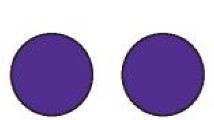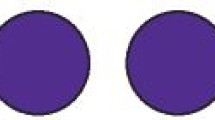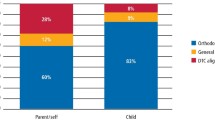Abstract
Data sources
Cochrane Oral Health Groups Trials Register, the Cochrane Central Register of Controlled Trials (CENTRAL), Medline, Embase, key international orthodontic and dental journals and the World Health Organization (WHO) International Clinical Trials Registry Platform.
Study selection
Randomised controlled trials comparing surgical anchorage with conventional anchorage in orthodontic patients. Trials comparing two types of surgical anchorage were also included.
Data extraction and synthesis
Data extraction was performed independently and in duplicate by three review authors and the Cochrane risk of bias tool was used to assess bias. Random-effects meta-analysis was used for more than three studies when pooling of the data was clinically and statistically appropriate. Fixed-effect analysis was undertaken with two or three studies.
Results
Fifteen studies, involving 543 analysed participants, were included. Five ongoing studies were identified. Eight studies were assessed to be at high overall risk of bias, six at unclear risk and one study at low risk of bias. Ten studies (407 randomised and 390 analysed patients) compared surgical anchorage with conventional anchorage for the primary outcome. A random-effects meta-analysis of seven studies for the primary outcome found strong evidence of an effect of surgical anchorage. Compared with conventional anchorage, surgical anchorage was more effective in the reinforcement of anchorage by 1.68 mm (95% CI −2.27 mm to −1.09 mm) (moderate quality evidence). This result should be interpreted with some caution, however, as there was a substantial degree of heterogeneity for this comparison. There was no evidence of a difference in overall duration of treatment between surgical and conventional anchorage (low quality of evidence).
Information on patient-reported outcomes such as pain and acceptability was limited and inconclusive. When direct comparisons were made between two types of surgical anchorage, there was a lack of evidence to suggest that any one technique was better than another.
Conclusions
There is moderate quality evidence that reinforcement of anchorage is more effective with surgical anchorage than conventional anchorage, and that results from mini-screw implants are particularly promising. While surgical anchorage is not associated with the inherent risks and compliance issues related to extra-oral headgear, none of the included studies reported on harms of surgical or conventional anchorage.
Similar content being viewed by others
Log in or create a free account to read this content
Gain free access to this article, as well as selected content from this journal and more on nature.com
or
References
Skeggs RM, Benson PE, Dyer F . Reinforcement of anchorage during orthodontic brace treatment with implants or other surgical methods. Cochrane Database Syst Rev 2007; 18;(3): CD005098.
Balshem H, Helfand M, Schünemann HJ, et al. GRADE guidelines: 3. Rating the quality of evidence. J Clin Epidemiol 2011; 64: 401–406.
Criteria for applying or using GRADE. GRADE working group. [online] Available from: http://www.gradeworkinggroup.org/publications/Minimum_criteria_for_using_GRADE_web.pdf [Accessed 30 October 2013].
Meursinge Reynders RA . Low quality evidence on the stability of orthodontic mini-implants. Evid Based Dent 2013; 14: 78–80.
Shea BJ, Grimshaw JM, Wells GA, et al. Development of AMSTAR: a measurement tool to assess the methodological quality of systematic reviews. BMC Med Res Methodol 2007; 7: 10.
Author information
Authors and Affiliations
Additional information
Address for correspondence: Luisa Fernandez Mauleffinch, Review Group Co-ordinator, Cochrane Oral Health Group, School of Dentistry, The University of Manchester, Coupland III Building, Oxford Road, Manchester, M13 9PL, UK. E-mail: luisa.fernandez@manchester.ac.uk
Jambi S, Walsh T, Sandler J, Benson PE, Skeggs RM, O'Brien KD. Reinforcement of anchorage during orthodontic brace treatment with implants or other surgical methods. Cochrane Database Syst Rev 2014; 8: Art. No. CD005098. DOI: 10.1002/14651858.CD005098.pub3.
This paper is based on a Cochrane Review published in the Cochrane Library 2014, issue 8 (see www.thecochranelibrary.com for information). Cochrane Reviews are regularly updated as new evidence emerges and in response to feedback, and the Cochrane Library should be consulted for the most recent version of the review.
Rights and permissions
About this article
Cite this article
Reynders, R., de Lange, J. Moderate quality evidence that surgical anchorage more effective than conventional anchorage during orthodontic treatment. Evid Based Dent 15, 108–109 (2014). https://doi.org/10.1038/sj.ebd.6401060
Published:
Issue date:
DOI: https://doi.org/10.1038/sj.ebd.6401060
This article is cited by
-
Barriers and facilitators to the implementation of orthodontic mini implants in clinical practice: a systematic review
Systematic Reviews (2016)
-
Insertion torque recordings for the diagnosis of contact between orthodontic mini-implants and dental roots: protocol for a systematic review
Systematic Reviews (2015)



